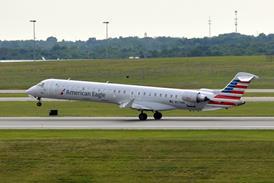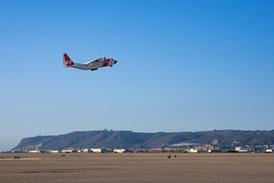Wolfsberg Aviation plans to start Raven 257 utility aircraft production in October and to begin deliveries around 12 months later, following final modifications to the eight-seat piston twin.
The Belgian company has taken wing production back in-house, through its Czech subsidiary Letov, after its joint venture with Evektor Aerotechnika collapsed late last year due to financial problems and disputes over subcontracting production to China.
The set-back delayed production, but design work continued, leading to a modified version of the eight-seater aircraft. Alec Clark, chief designer, says: "We realised that we needed a larger fuselage, as cargo consignments are bulkier and passengers no longer tolerate having to crouch." The new cabin height is 1.5m (58in), 250mm larger than the original prototype, which has necessitated a 1.4m (4.6ft) increase in wing span to 15.4m. The maximum all-up weight of the Raven 257 has been increased by 7% to 3,100kg (6,830lb).
Clark says that the modifications will make the aircraft more expensive, but that the company has concentrated on developing a product that goes further than the original remit of competing with the BN Islander. The all-metal aircraft is powered by two Teledyne Continental IO-550-N engines.
Wolfsberg has received 240 "serious enquiries" from potential customers in Alaska, Australia, northern Canada, the Caribbean and the Pacific islands. Clark says the company hopes to sign up the first firm order, from a German customer, in the near future.
Meanwhile, Wolfsberg's relationship with former joint venture partner Evektor remains amicable, with the former planning to subcontract fuselage parts for the Raven. The partnership collapsed last year amid concerns over the quality of undercarriage parts that the Kunovice, Czech Republic-based Evektor has subcontracted to China's Guizhou Aviation.
Wolfsberg is also moving into the design stage of a new six-seater piston-engined light aircraft, dubbed the Sparrow. Designed to compete with the Cessna 206 Stationair, the company believes a twin-engined aircraft will be attractive to operators who fly over water, hostile terrain or wilderness, over which single-engined aircraft are often prohibited.
Source: Flight International























